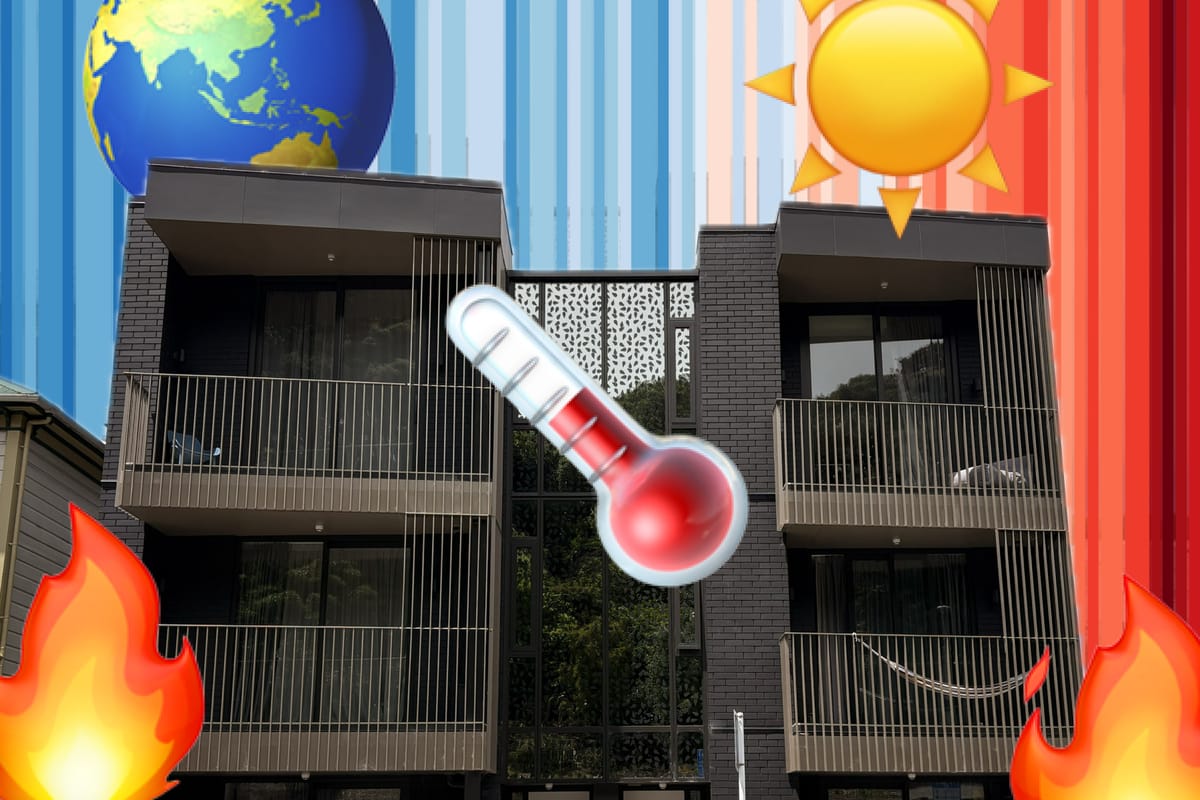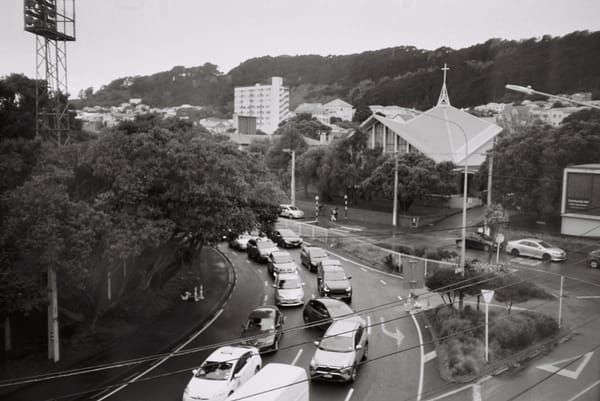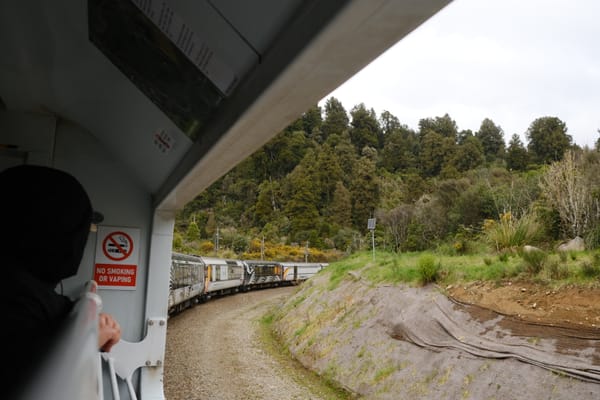Too Hot To Handle: how climate-friendly housing is becoming unliveable.

Originally published on The Spinoff (!!!)
My partner and I live in a north-facing apartment. It is perfect for low-pollution living. We live near a bus stop, and everything we need is a 15-minute walk or bike ride away. Our windows are let in lots of light, meaning our home is cozy in the depths of winter.
Our home is exactly what you want to live a sustainable lifestyle.
Except… it gets hot. Really hot.
We’re talking 30 degrees in autumn.
And our apartment isn’t the only one facing this problem.
Townhouses and apartments are the most environmentally friendly places someone can live. Yet, they’re getting less livable with every passing summer. And in the last 20 years, the government hasn’t done much to address it.
Wellington is spiralling towards 30-degree heatwaves every year, and the most sustainable housing we have risks becoming unlivable in a warmer world. What’s going on?
How bad are the temperatures in apartment and townhouses?
For a long time, New Zealanders have focused on the issue of cold homes. Real progress has been made to solve this issue, like subsidising insulation in the 2010s and mandating heat pumps in rentals in the 2020s. Since at least 2000, the opposite problem has been appearing in townhouses and apartments: homes that get unbearably hot.
In 2007, the Building Research Association (BRANZ) did a study of nearly 400 homes in New Zealand. They found that newer buildings were going above the comfortable temperature of 25 degrees. They warned that climate change was only going to make this problem worse.

Fast forward nearly 20 years, and we’re still seeing this issue. In March, a townhouse owner in Auckland told RNZ that her bedroom was an insufferable 30 degrees at nine o’clock at night. Safe sleeping temperatures are half that.
On a 24-degree day, this person’s temperature inside was between 28 to 32 degrees. Even the biggest summer lover would be struggling in those temperatures.
Just imagine what that will be like in yearly 30+ degree heatwaves: which is what Wellington is heading towards based on government policy. Stuffy homes in extreme heat will become dangerous to our health.
It’s hard to tell exactly how many homes in Wellington get unbearably hot. However, Auckland Council recently did a study on townhouse and apartment living. They found that approximately a quarter of people in apartments were dissatisfied with overheating in their homes. Staggeringly, half of people living in townhouses had trouble with overheating.
Townhouses and apartments are crucial for solving climate change: they allow far more people to live close to work and play, which drastically lowers the amount of pollution we create by commuting. Getting this housing right is critical. Why is this a common issue?

Why are they like this?!
The answer is… they’re designed badly. The lovely big north-facing windows at our apartment? That’s poor design that increases temperatures inside.
Our windows have no overhang above them, so direct sunlight beams heat straight into the apartment for the entire day. Our eastern windows are small and latched, meaning we can’t create a cross breeze. The apartment wasn’t designed with a heat pump, and if we owned this place, there’s a chance our body corporate wouldn’t allow us to install one.
The good things about this place become bad when these design mistakes are made. Since this building is so modern, the glazing retains more heat, and it’s far more airtight. Shared interior walls keep heat in too. These features that keep us cozy in winter amplify the consequences of never designing for hot temperatures.
How do we do something about it?
Time to put my policy wonk hat on.
For nearly 25 years, researchers have been saying that the Building Code needs to put standards in for cooling homes.
Architects like Tim Ross agree. He told RNZ: “…we don't have anything in the Building Code that prevents over-glazing and over-heating.”
Those standards still don’t exist because neither National nor Labour have prioritised it.
The solutions we need in the Building Code are relatively simple. It’s stuff like adding overhangs above windows to shade them, or not pointing giant windows north, or improving ventilation. The technical guides to implement these things exist already, thanks to the Building Research Association.
According to Ross, it only takes a few hours to see how a design might overheat. That could save tens of thousands of dollars in the future in electricity and installing fixes after the build is complete.
Apartments aren’t inherently unlivable in a warmer world. Badly designed housing is the problem.
Wellington has made it a lot easier to build townhouses and apartments in the central city, something I am unequivocally pleased about. It will offer more places for people to live sustainably. All of those people who will get access to a more sustainable way to live deserve to be moving into homes that will be safe in a warmer world.
The freakish heatwaves are coming. How bad they are depends on how fast our leaders act. Whether the world warms one degree or four, many of our buildings aren’t ready.
We must act to stop warming the world any further. Unfortunately, a warmer world is already coming because political leaders have delayed solving it.
Our buildings need to adapt before the temperatures become too hot to handle.





